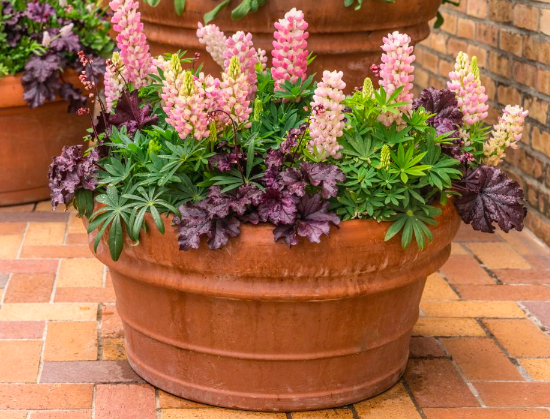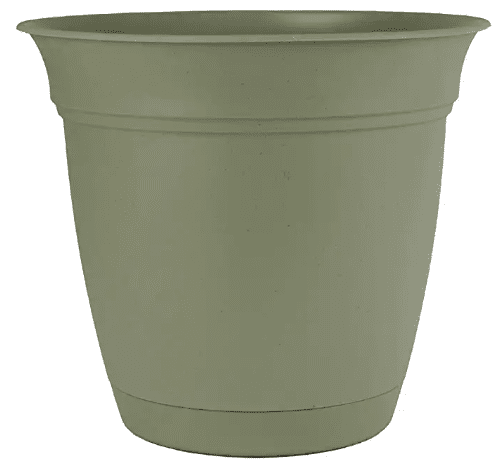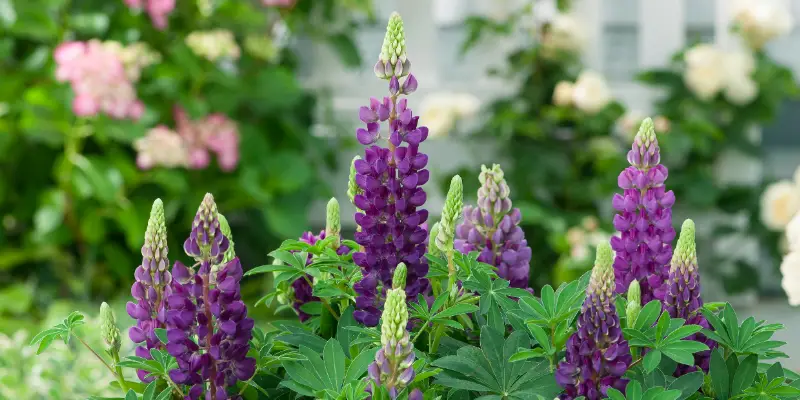If you are looking for an interesting and unique flower to grow in your garden, you should consider lupins. They come in a variety of colors and are easy to grow. But can they be grown in pots?
In this blog post, we will take a look at whether or not lupins can be grown in pots, the best way to do it, and what you need to know before you get started. Let’s take a closer look!
Can Lupins Be Grown in Pots?
Yes, lupins can be grown in pots! They are a perfect plant for container gardens because they have shallow roots and don’t require a lot of space.
The best way to grow lupins in pots is to start them from seed. You can sow the seeds directly into the pot or start them indoors and then transplant them later. If you live in a cold climate, it is best to start the seeds indoors so that they can get a head start on the growing season.
Once the lupin roots are poking out of the bottom of the pot, it’s time to transplant them into a larger pot for the majority of their growing season. Be sure to choose a pot that is 12-16 inches deep and has drainage holes in the bottom. This is because lupins have large taproots and need plenty of room to grow.

Where to Place Potted Lupins?
Lupins love full sun, so make sure to place them in an area of your garden that gets at least six hours of sunlight per day. If you live in a hot climate, it is best to place the pots in a location where they will get some afternoon shade. This will help prevent the plant from getting too much heat and drying out.
It’s also a good idea to place potted lupins in an area that is protected from harsh winds. Lupins are delicate plants and can be easily damaged by strong winds.
Once you have found the perfect spot for your potted lupins, it’s time to sit back and enjoy the show! These beautiful flowers will add color and life to your garden all season long. Just be sure to deadhead them regularly to keep them looking their best.
What Pot for Lupins?
Any type of pot can work well for growing lupins, as long as it is the right size and has drainage holes. I prefer using plastic pots that are lightweight as they are easy to move around. You can also use ceramic or terracotta pots, but be aware that they will dry out more quickly than plastic pots.
The plastic pots (Amazon link to my favorites) are also remarkably durable and can be reused for several years. However, you can grow lupins in an old bucket if you really wanted to! As the plant matures, it may reach heights of over six feet, so make sure you choose a pot that is big enough.
It’s also important to use the fresh potting mix when you are transplanting your lupins into a larger pot. This will give them the nutrients they need to grow and thrive. Be sure to water the pots well after transplanting and keep them in a sunny spot.
Just remember, the bigger the pot, the larger your lupin plant will grow. So, choose a pot that is big enough to accommodate the size of plant you want.

Overwintering Lupins in Pots
Lupins are hardy plants that generally do well in winter weather. However, potted lupins may need a little extra care to get through the winter months. This is because their roots are more exposed to the cold and can easily freeze.
To protect your potted lupins from the cold, you can move them to a garage or shed that is away from any drafts. You can also wrap the pots in burlap or bubble wrap to insulate them further.
It’s also important to protect potted lupins from excessive rainfall. The last thing you want is your lupins to sit in waterlogged soil all winter long. To avoid this, make sure the pots have drainage holes and are elevated off the ground.
If you can’t move your lupins inside for the winter, wrap the pots in bubble wrap and place them on top of a layer of mulch. This will help protect the roots from the cold and prevent them from freezing.
Removing Dead Foliage from Potted Lupins
At the end of the growing season, lupins can die back and the foliage may turn brown in places. This is normal and nothing to be overly concerned about.
To tidy up your potted lupins, simply remove the dead leaves and stems with a pair of pruning shears. You can also cut the plants back by a third to encourage new growth in the spring.
Once all the dead foliage has been removed, your lupins will be ready to overwinter. Just be sure to give them a little extra care to ensure they make it through the winter months healthy and happy.
Conclusion
Potted lupins are a great way to add color and life to your garden. They are easy to care for and only need a little extra attention in the winter months. Just be sure to choose the right pot, place them in full sun, and protect them from harsh winds. With a little love, your lupins will thrive all season long!
Do you have any tips for growing lupins in containers? Share them in the comments below! I hope this article was helpful and that you now feel confident growing lupins in this way. Thanks for reading!
Tim is an avid gardener from the UK. He was the founder of PlantCarer.com from 2021 to Sep 2023. He sold PlantCarer.com to Aaron. He has since started his own business called Seed To Supper, which provides new gardeners all the materials you need in a box (pots, seeds, compost and instructions) to grow your own delicious and nutritious vegetables and herbs from start to finish – no garden required.

